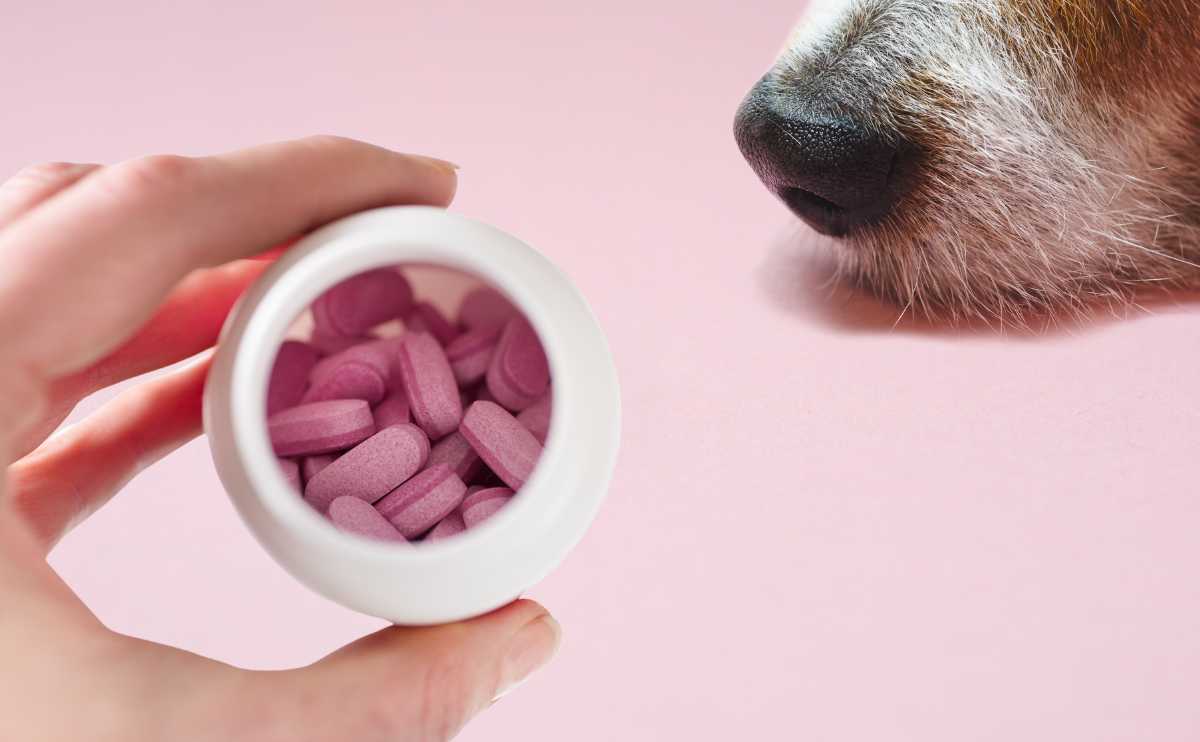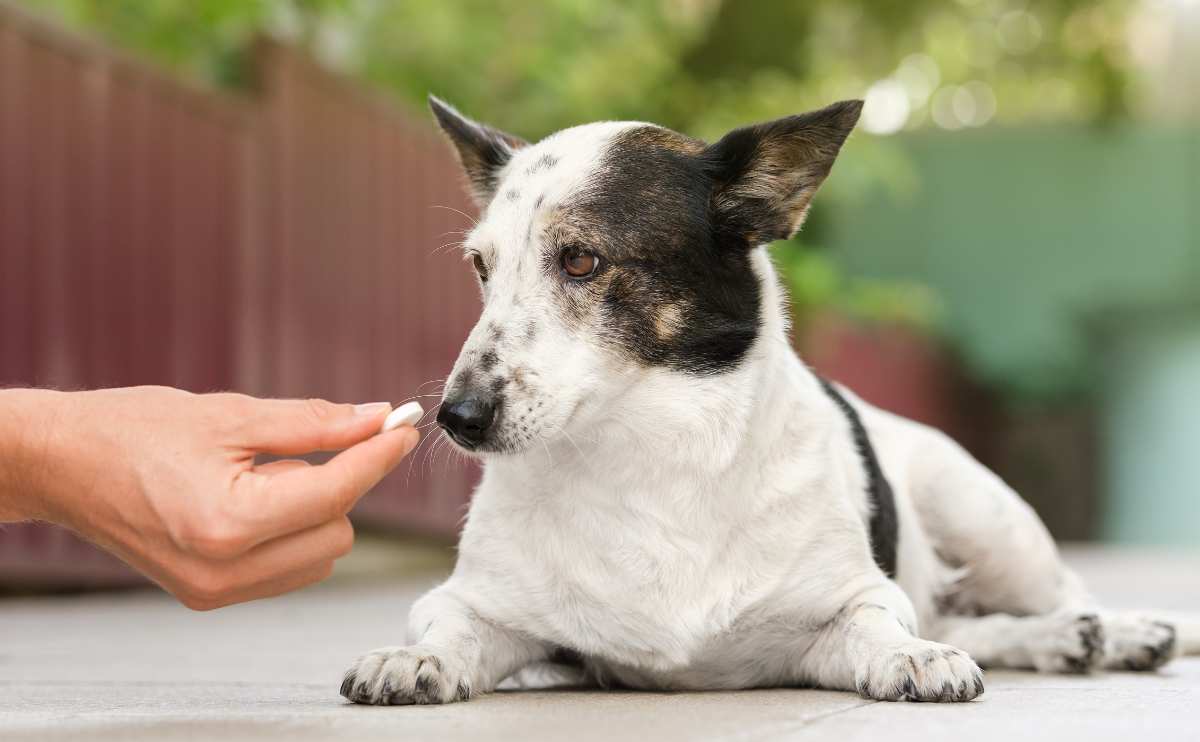When you purchase through links on our site, we may earn a commission. Here’s how it works.
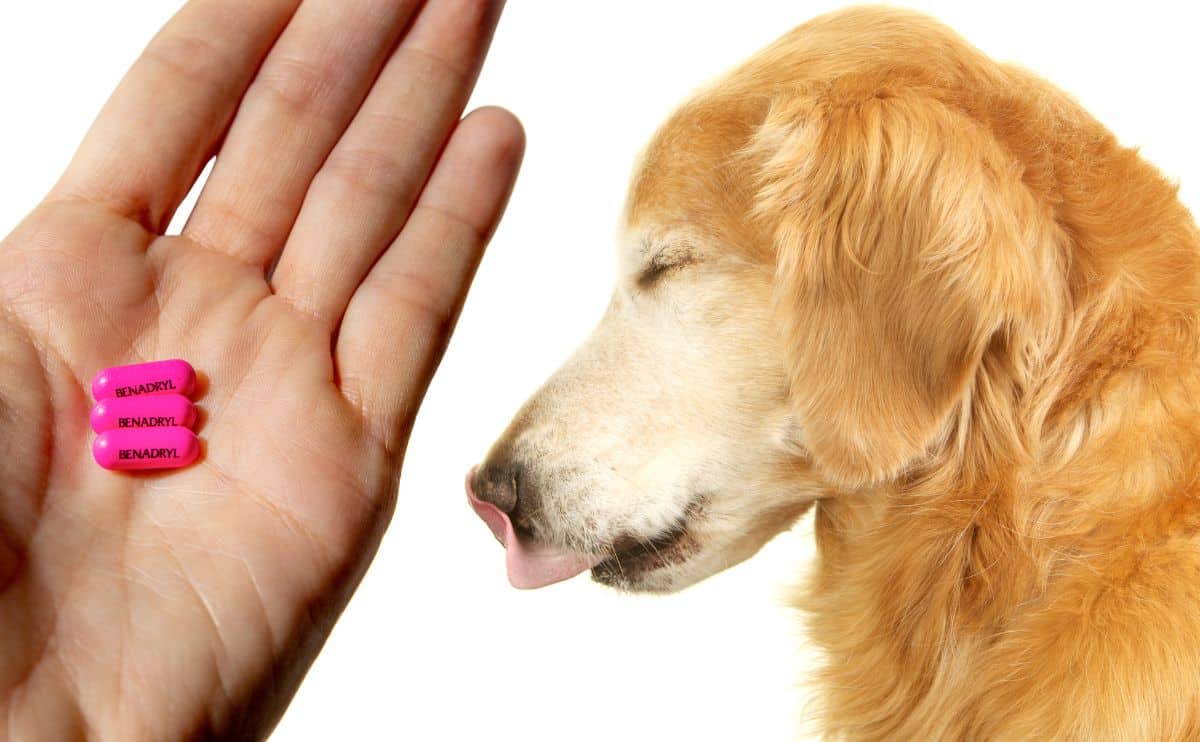
If you have a dog, you’ve probably experienced a time when he’s been itchy for one reason or another. There’s nothing more frustrating as a pet owner than watching your pup scratch away with no relief in sight.
Just like us, dogs are susceptible to minor allergies and reactions. Luckily, there’s an over-the-counter medication that veterinarians and pet owners can trust to take the edge off. In this article, we’ll discuss the many uses of Benadryl and the safe ways to add it to your beloved companions’ routine.
- What Is Benadryl?
- What Is Benadryl Used For?
- What Are The Side Effects Of Benadryl On Dogs?
- Are There Any Risk Factors?
- How Much Benadryl Can I Give My Dog?
- What Are The Signs Of A Benadryl Overdose?
- When Should I Contact My Vet?
- Benadryl Alternatives For Skin Allergies
- How Can I Figure Out What’s Causing My Dog’s Allergies?
What Is Benadryl?
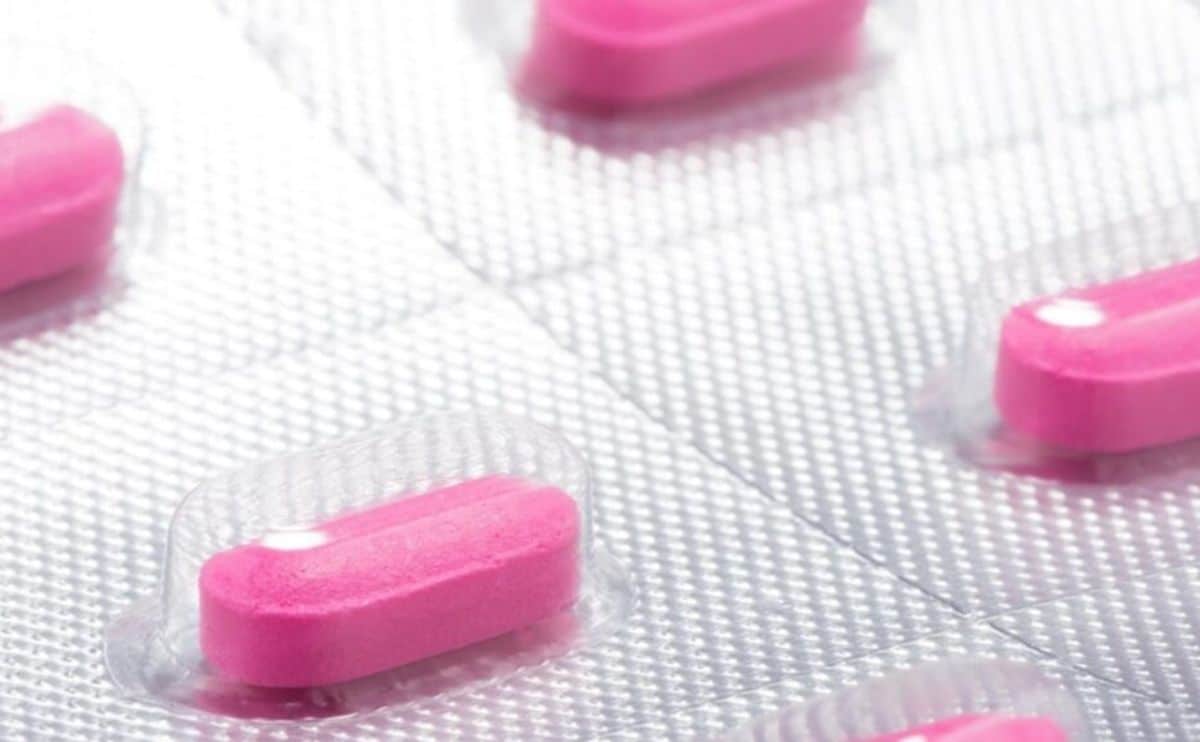
Benadryl is an over-the-counter drug that’s used to relieve many mild allergy-related symptoms. In the U.S.,* its main ingredient is diphenhydramine, which relieves our body’s response to allergens and the accompanying symptoms.
During an allergic reaction, our bodies release two natural substances called histamines and acetylcholine. This can cause itchiness, hives, swelling, redness, watery eyes, and a list of other symptoms. The symptoms will depend on how severe the reaction is. An antihistamine, Benadryl works by blocking these symptom-causing substances.
Dogs have this same bodily response when they’re exposed to an allergen, so Benadryl works in the same way to bring them relief for allergy symptoms. Because it’s so well tolerated and has a wide safety margin, it’s one of the only over-the-counter medications veterinarians approve for routine at-home use.
*Diphenhydramine hydrochloride is the active ingredient in “American Benadryl” (found in the U.S., Canada, Singapore, Taiwan, Italy, and Hong Kong). However, in the U.K. and Denmark, the active ingredients are acrivastine in Benadryl Allergy Relief and cetirizine in Benadryl Once a Day. Limited information exists on acrivastine and cetirizine use in dogs, so if you’re in Europe, make sure the active ingredient is diphenhydramine, the only form of Benadryl that’s considered safe for dogs.
What Is Benadryl Used For?
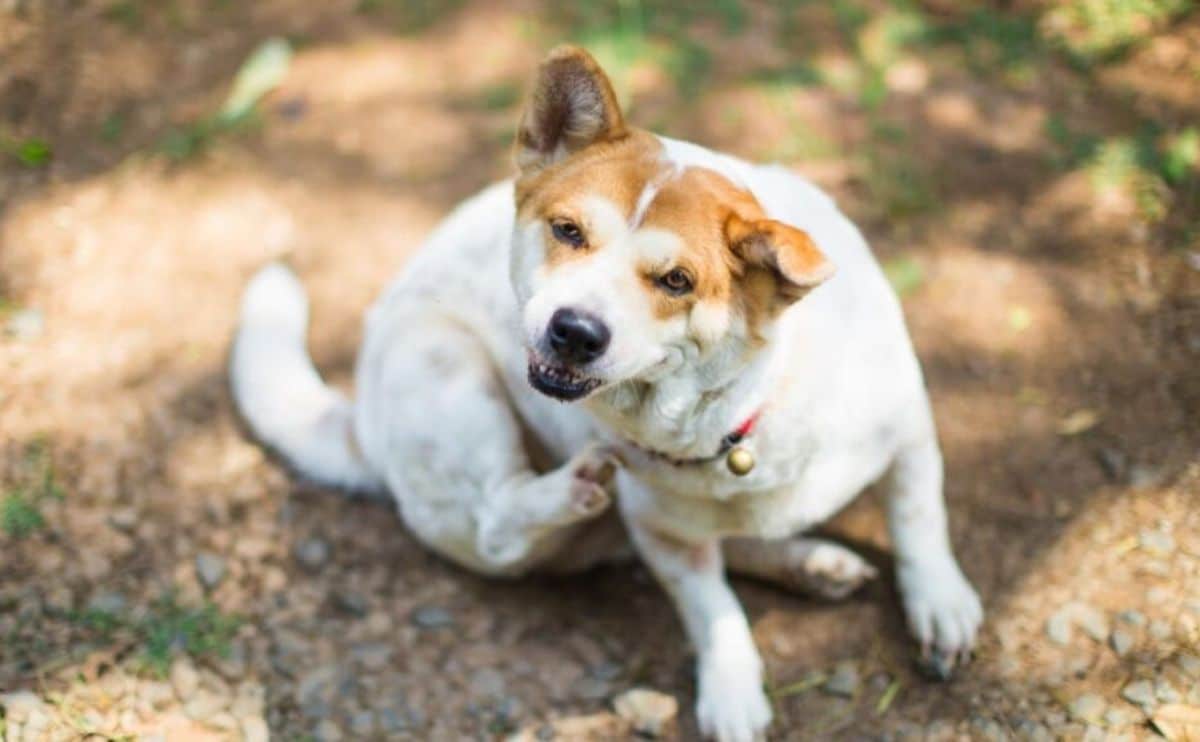
Benadryl has been used to relieve so many uncomfortable dogs since its introduction to the animal world. With its benefits and few negative side effects, it’s added to several different treatment plans. Some of its uses include:
Allergic Reactions
Just like us, our fur babies can have allergic reactions to new irritants in their environment. This can mean an insect bite or a new shampoo. An allergic reaction in a dog can present as a swollen muzzle, red skin, hives, or even vomiting. While you should contact your vet first, Benadryl is almost always used to respond to a reaction.
Vaccines
Some pets can have reactions to the vaccines that their bodies need to fight off dangerous viruses. In this case, Benadryl is often given as pre-medication in hopes to neutralize the reaction before it even starts. If your dog has had reactions to their vaccines in the past, talk to your vet about offering Benadryl beforehand.
Chronic Itching
Dogs with skin allergies itch a lot. Whether it flares up at a certain time of year or if it seems to be constant, Benadryl can help take the edge off. After ruling out any other causes for itchy skin at your vet, using Benadryl can bring great benefits to your itchy companion.
Anxiety
If you’ve ever taken Benadryl, you probably remember that sudden urge to take a nap. Diphenhydramine can cause drowsiness for pups as well, so it’s often recommended to relax dogs who suffer from anxiety while traveling, during fireworks, etc. It may also help with motion sickness.
What Are The Side Effects Of Benadryl On Dogs?

Benadryl has very few negative side effects, making it such a great option for routine use. Though these side effects are rare, there are a few things you should keep an eye out for. Some of the more common and less severe side effects of Benadryl in dogs are:
- Drowsiness
- Relaxed demeanor
- Dry mouth
- Unsteady gait
Some of the more severe side effects include:
- Diarrhea
- Vomiting
- Lack of appetite
- Rapid heartbeat
- Breathing problems
Like any other medication, the potential for a negative response is possible. Following the recommended dosage for this medication, along with discussing its use with your vet, will help to prevent these side effects.
Are There Any Risk Factors?
Benadryl can make some conditions worse, so you should use caution if your pup suffers from any of the following health issues. Be sure to discuss Benadryl use with your veterinarian in these cases and if there’s a possibility of adverse interactions with any other medication your furry friend is taking.
- Pregnancy
- Glaucoma
- Dry eye
- Heart disease
- High blood pressure
- Chronic obstructive pulmonary disease (COPD)
- Intestinal obstruction
How Much Benadryl Can I Give My Dog?
Once you have discussed the use of Benadryl with your vet, the dosing guide for Benadryl* is quite simple. Most vet techs have historically recommended a standard dose of roughly 1mg/pound for our patients with mild allergies and itchy skin. The standard Benadryl you will find in stores is 25mg/tablet for adult-sized Benadryl. You may also find 12.5mg/5 ml for Children’s Liquid Benadryl.
This dose can be increased if needed for those extra itchy pups, but make sure to talk to your vet first to avoid any potential complications. To make your life easier, I will add a guide below for a quick breakdown of dosing for your furry friend.
*We follow the Merck Veterinary Manual’s guidelines for antihistamine dosing. If you’re wondering why antihistamine dosing differs from human dosing, it’s because dogs metabolize Benadryl and other antihistamines much faster than humans.
| Dog’s Weight | Benadryl Dosage |
|---|---|
| 5 lbs | 5 mg – 2 ml Children’s Benadryl every 8-12 hours |
| 10 lbs | 10 mg – 4 ml Children’s Benadryl every 8-12 hours |
| 20 lbs | 20 mg – 3/4 tablet every 8-12 hours |
| 30 lbs | 30mg- 1 tablet every 8-12 hours |
| 40 lbs | 40mg- 1.5 tablets every 8-12 hours |
| 50 lbs | 50mg- 2 tablets every 8-12 hours |
| 60 lbs | 60mg- 2.5 tablets every 8-12 hours |
| 70 lbs | 70mg- 2.5 tablets every 8-12 hours |
| 80 lbs | 80mg- 3 tablets every 8-12 hours |
| 90 lbs | 90-100mg- 3.5-4 tablets every 8-12 hours |
What Are The Signs Of A Benadryl Overdose?
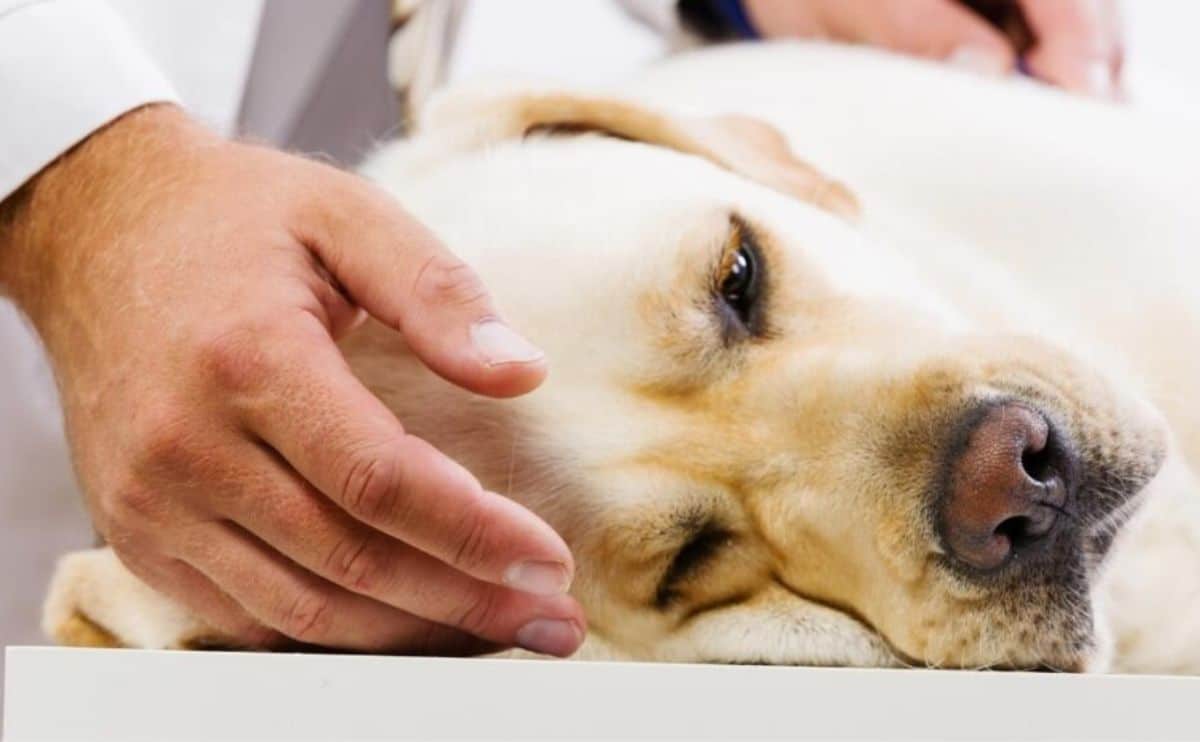
While Benadryl has a wide safety range, it’s still possible to overdose on Benadryl. Sticking to the recommended dosage of this drug is important for your pup’s health and helps to ensure the full benefits that Benadryl can bring.
If you think your dog is experiencing a Benadryl overdose, please contact your veterinarian ASAP for further treatment. Symptoms of Benadryl overdose include:
- Rapid heartbeat
- Dilated pupils
- Agitation
- Seizures
- Constipation
When Should I Contact My Vet?
It’s important to remember that while Benadryl can bring our doggo incredible relief, it’s not a “cure” for any kind of medical condition. Benadryl is simply made to target any kind of allergic response and alleviate the symptoms associated with that response. If your pup is experiencing a chronic problem or is no longer finding relief with Benadryl, then it is time to talk to your veterinarian about the next set of options. Here are a few tips to help you know when it’s time to contact your vet:
They Won’t Stop Itching
If you use Benadryl daily, but your beloved companion will not stop itching, it ‘s time to pay a visit to your vet. Several different skin conditions can cause itchiness that will not resolve with Benadryl, so it’s important to get a professional opinion.
Their Eyes Are “Goopy”
Some pet owners are quick to jump to “allergies” any time their pet is experiencing discharge and goopiness in the eyes. Discharge from your dog’s eye is not normal and should always be checked by a professional. This is especially important with the use of Benadryl, as glaucoma can be worsened with the routine use of antihistamines.
Hot Spots & Scabs
Sometimes our dogs can scratch and bite themselves to the point of injury. This can lead to open wounds and hot spots. If your pet is experiencing wounds and severe skin irritation, a trip to the vet is crucial. You’ll need to pinpoint the cause of their discomfort and resolve any skin infection.
Sneezing Or Coughing
While sneezing and coughing can be associated with allergies, if you hear your pet doing either, it’s safest to pay your vet a visit. These same symptoms can be associated with respiratory infections and other contagious illnesses, so ruling these illnesses out is important. The progression of these conditions without medical intervention can be serious.
Diagnosed Conditions
If your dog has any diagnosed condition, it’s best to discuss the use of Benadryl with your vet first to rule out any interactions with the condition. You want to make sure it won’t conflict with other medications that your pet is taking.
Reaction To Medication
We discussed how reactions to Benadryl are rare, but they can happen. If your pet experiences any diarrhea, vomiting, anorexia, change in breathing, rapid heartbeat, or any other concerning symptoms, stop its use and contact your vet ASAP.
Benadryl Alternatives For Skin Allergies
The common use of Benadryl in dogs is for skin allergies and itchiness. Luckily, there are so many options these days with quality shampoos and prescription medications. If you are looking for a safe alternative or an addition to your dog’s itchy skin treatment, here are a few options below.
Shampoo
When our furry friends have itchy and dry skin, a shampoo that can combat these symptoms can bring them incredible relief. Look for ingredients such as oatmeal, aloe, lavender, chamomile, vitamin E, or allantoin. Weekly or bi-weekly baths can help to hydrate their skin and relieve itchiness.
Prescription Medications
If Benadryl just doesn’t do the trick, your pet may need something a bit stronger to relieve his symptoms. There are now several different options for itchy pups in the form of daily medications and monthly injections. Talk to your vet about what option would be favorable to your pup.
Supplements
Many pet owners find relief for their dogs by adding fish oil and other dog allergy supplements to their diet. By helping to nourish dry skin, this can relieve itchiness.
How Can I Figure Out What’s Causing My Dog’s Allergies?
Determining the cause of your dog’s allergies can be extremely difficult. We recommend that you consult your veterinarian to try to nail down the problem. But another first course of action is to give your pup an at-home dog allergy test kit. These kits test for intolerances to many food and environmental factors. Then, you can share these results with your vet to work on further diagnostics and a treatment plan.
Tagged With: Allergies, Medication